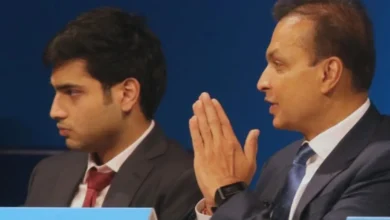Calls for schools to get ‘creative’ with reopening have largely been ignored. Why?
Early last month, New York magazine published an intriguing proposal for the fast-approaching school year: “This Fall, Classrooms Will Be Too Crowded. Theaters and Malls Will Be Empty. We See a Solution.” Similarly, The Atlantic noted the plethora of unused office buildings and empty college campuses that will be available come fall. “Alternative solutions to parents’ dilemma just require more time, money, and imagination,” the article said.
The words “imagination” and “creativity” have come up often over the past couple months as teachers, parents, and politicians have debated how to reopen schools. With no immediate end in sight for the COVID-19 pandemic, which has killed more than 160,000 Americans, these debates have been contentious.
Some people argue that reopened schools are just asking for a devastating second wave of the pandemic. Others say teachers, like nurses and doctors, should just get on with their jobs, arguing they’re just as essential to society as healthcare workers.
A much discussed solution involves taking the middle ground—in-person instruction, with enough physical space to keep kids and teachers socially-distant. Like the Atlantic article suggests, schools could create more space for their students to socially distance by relocating to a university lecture hall with 200 seats, rather than sticking with a classroom that seats 30.
The result: Younger students, for whom hands-on instruction is more vital, get a better schooling experience. And parents could worry less about childcare during peak working hours. As New York wrote, “Let’s declare an educational emergency and recognize that returning to physical classrooms by the start of the academic year is one of society’s most urgent priorities, even if that means enlarging our concept of what a school building is.”
It may sound like a reasonable plan to salvage a highly difficult choice. But for most major school districts in the U.S., it probably won’t happen. As of Aug. 6, 17 of the largest 20 U.S. school districts are forgoing in-person learning altogether—at least to start the year—out of a fear of more COVID-19 cases. Like the chaotic spring that saw millions of students rapidly switch to remote learning, school in these districts this year will at least partly be online.
As enticing as the alternative classrooms sound, too many proposals are from people who don’t actually teach children, says Mark Weber, a full-time K-12 teacher in Warren Township, N.J., as well as a part-time lecturer at the Graduate School of Education at Rutgers University. The ideas therefore fail to take into consideration a number of potential complications.
“As an educator there are all kinds of questions because you know the set-up needed to take care of your concerns,” Weber says. “Are the kids safe? Are there adequate bathroom facilities? Can you get in and out of facility easily? Can you monitor the children properly? Is liability taken care of?”
Liability is a particularly contentious issue as schools weigh reopening for public and private schools alike—although more so the latter. In Tampa, the Catholic Diocese of St. Petersburg asked parents of its nearly 13,000 students to sign a waiver in case their children become ill, or worse, from COVID-19. An outraged mother called the form a “death release.”
A liability waiver for schooling in an alternative space would potentially then have to account for not only the school, but the office building, movie theater, lecture hall, or whatever space is being used, further complicating matters.
One notable district that is pushing forward with in-person classes happens to be the nation’s largest: New York City. On Friday, New York Gov. Andrew Cuomo announced the state’s schools will be allowed to open for in-person instruction in the fall, though the final decision will come down to local superintendents and officials like New York City Mayor Bill de Blasio.
New York’s plan is a hybrid model, in which students will go to school two to three days a week, and learn remotely on the other days. At press conference last month, the mayor said the city’s education department was looking for spaces in non-school buildings to help alleviate space constraints. But none of these spaces have yet to be disclosed. The education department did not respond to a request for comment.
One 5th grade Brooklyn public school teacher doesn’t expect much to come from these plans. For one, there could be an issue with transportation. “A lot of our kids walk to the building, and I think if their location were to change from day to day or class to class, I think parents would end up taking them to the wrong place,” says the teacher, who spoke on the condition of anonymity because he was not authorized to speak to the press. “But aside from the logistical issues that would come up, right now my school’s priority is people more than it is spaces.”
The teacher says that due to the recent proliferation of charter and private schools, his school has shrunk from more than 1,000 students to around 500. “Half of our classrooms are empty, so providing for social distancing with our entire population wouldn’t be an issue of having enough space,” the teacher said. “It would be an issue of having proper supervision.”
Some schools are experimenting less with alternative indoor space and more with outdoor space. A recent NBC News article outlined measures some districts have taken, from buying tents and all-weather snowsuits to gathering tree stumps for outdoor seating. “Schools need to figure out a new solution because the inside of the building doesn’t work as the only solution and online learning doesn’t work as the only solution,” Sharon Danks, CEO of Green Schoolyards America, an organization focused on adding green spaces to school grounds, told NBC. But others, like the superintendent of a Phoenix area district called it a “gimmick,” saying weather will be too inconsistent for it to truly work year round.
“You can always find one example, one or two exceptions” of schools experimenting with alternative spaces,” says Weber, the New Jersey teacher and university lecturer. “But then you’re making policy by anecdote. What we really should be talking about is what do we need to do to keep school reopenings up to scale,” like insuring that staff have access to enough personal protective equipment, or that additional teachers are hired to supervise smaller class sizes in an effort to reduce the spread.
And for most school districts, the answer has been less about creativity than it is practicality. Remote learning isn’t perfect, but educators have decided it is easier to implement than creating pop-up schools. “We have to be guided by the science, period,” Chicago Mayor Lori Lightfoot said last week while announcing that the city’s public schools would shift from a hybrid model to fully-remote. When in-person classes were still on the table weeks ago, “we were in a very different place in the arc of the pandemic,” she said.
By forgoing any level of in-person education, Chicago’s decision seems to underline the fear of sending students and teachers out of their homes to any physical space, school or non-school. “We have to acknowledge that we are trying to pick the least worst option,” Weber said. Even if it’s not as imaginative.
Source: Fortune




